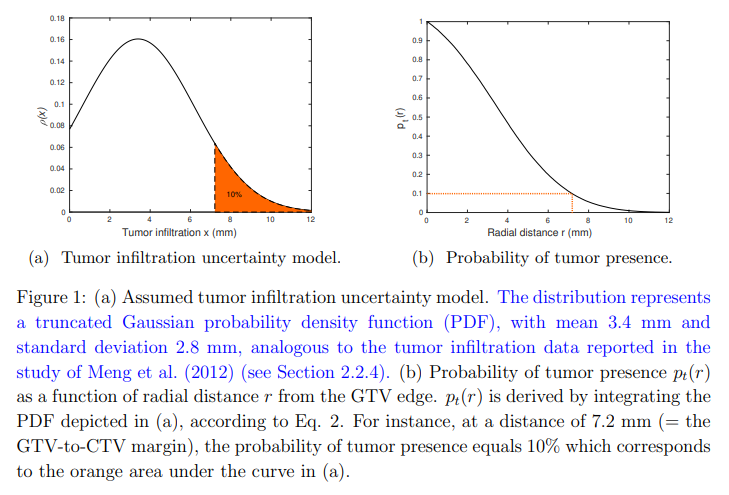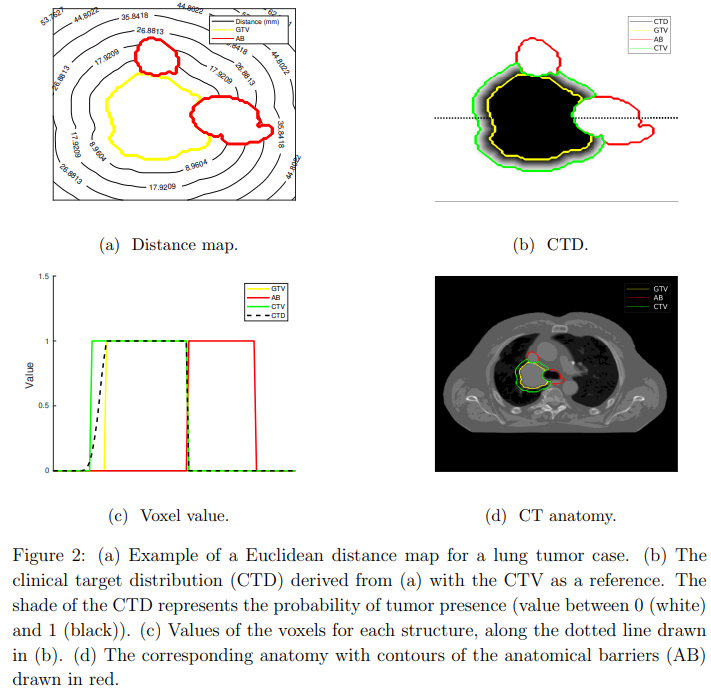
In radiation oncology, a treatment margin is often added to the gross tumor volume to include the invisible spread of tumor cells into surrounding tissues. The extent of this margin is informed by clinical data, including the distance of recurrences observed after radiotherapy, and is often manually corrected based on the physician’s experience. Modifications usually require an assessment of the desire to potentially tumorous tissues versus sparing critical structures. Such an assessment is based on tumor probability and therefore requires the use of alternative treatment planning strategies. The goal of this project is to develop treatment planning tools for probabilistic optimization that allow for making better trade-offs than using conventional binary target volumes.

Responsible(s)
- Gregory Buti Massachusetts General Hospital & Harvard Medical School (gbuti@mgh.harvard.edu)
- Edmond Sterpin MIRO/IREC/UCLouvain - PARTICLE/KULeuven (edmond.sterpin@uclouvain.be)
- Thomas Bortfeld Massachusetts General Hospital & Harvard Medical School
Related Publication(s)
- Introducing a probabilistic definition of the target in a robust treatment planning framework G Buti, K Souris, AMB Montero, J. A. Lee, E Sterpin. Physics in Medicine & Biology 66 (15).
